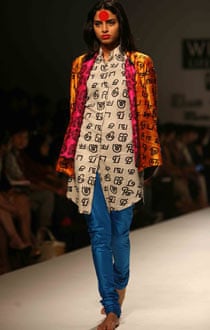
Online retail is big business. According to the British Retail Consortium, online sales account for 8% of the UK's retail sector – worth £23bn a year. Besides being a godsend for white goods and electronics, internet shopping is perfect for lovers of fashion, and religious women are no exception.
Professor Reina Lewis and her colleagues at the London College of Fashion have been researching Modest Dressing, which refers to women who "dress in a way that satisfies their spiritual and stylistic requirements for reasons of faith, religion or personal preference".
"What we have observed is that it's a growing phenomenon and it's happening among women of different faiths," says Lewis. "In the UK, what we see most often are young, trendy Muslim women in headscarves – many of this generation are working modesty in relation to mainstream fashion trends, not through wearing so-called ethnic or traditional clothing. This is a generation who have grown up with consumer culture, and who expect to express every aspect of themselves through participation in consumer culture."
Muslim fashion online has been steadily growing over the last few years, with blogs such as the UK-based Hijab Style and Hijabs High, which post photographs of hijabis in a style not too dissimilar to that of super-blogger The Sartorialist. Googling "modest fashion" produces sites that interpret "modest" in vastly different ways – some showcase fashions that only show the face, hands and feet. Others, such as I'm Clothed Much (run by an LA-based Mormon blogger), showcase styles that are more revealing but appeal to the faithful and fashion-forward.
"There is no single definition of modesty; different faiths have different parameters, but there is also discussion and dispute within faiths and denominations," says Lewis.
The researchers discovered that many of these new modest brands are transcending their original intended audiences, and adjusting their product ranges for other faith groups – and beyond. "One of the things this project set out to do was to widen the frame to look at women of other faith backgrounds and those who don't identify as religious. We were looking at the ways in which e-commerce is making, developing – and encouraging – this new market."